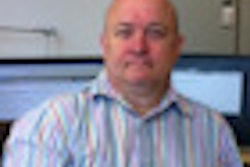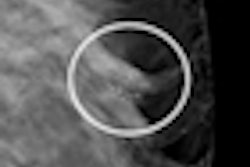Switching from film-screen to full-field digital mammography (FFDM) increases the total repeat rate for screening mammograms, offsetting some of the dose savings afforded by the digital equipment, according to research presented this week at the American Association of Physicists in Medicine (AAPM) meeting in Vancouver, British Columbia.
Researchers from the University of Texas Health Science Center at San Antonio investigated any changes in the number of extra views acquired for screening mammography and the resulting effect on total dose after their transition to FFDM. They found that the repeat rate for patients receiving screening mammograms on FFDM equipment was almost three times higher than with film-screen mammography (FSM).
The study evaluated screening mammograms performed at the University of Texas over a four-year period, with a total of almost 50,000 screening exams performed during the last two years of FSM use and the first two years of FFDM implementation, according to research team member Mustapha Hatab, PhD.
"I was talking to our chief of breast imaging in September of 2008, after we'd converted to digital mammography, and she said she thought she'd been seeing more retakes," Hatab told AuntMinnie.com. "When we checked in a year later, the situation was the same, so we decided to track it."
Of the 23,516 patients who received screening mammograms on FFDM equipment, 36.5% had more than the standard four views (craniocaudal and mediolateral oblique views of each breast). Of the patients, 15.5% had a total of five images, 12.1% had six images, 3.3% had seven images, and 5.6% had eight or more images. The total repeat rate averaged over all patients was 14.1%. In contrast, the repeat rate for patients undergoing film-screen mammography for an equivalent two-year period was close to 5.5%.
As for dose, there was an 18% decrease in mean glandular dose per view in going from FSM to FFDM imaging. This dose saving is decreased considerably when the number of extra views is taken into consideration.
"On average, our [film-screen] patients were having 2.1 views per breast, while our FFDM patients were having 2.2 views per breast," Hatab said. "If you take the dose savings you get from digital and factor in this increase, the 18% dose savings that resulted in going from film to digital dropped to 11%."
Part of the increased retake rate has to do with the novelty of a new technology, according to Hatab.
"Any time you switch to a new modality, there's a learning curve," Hatab said. "In the old days the technologist had to walk to the darkroom to process the film, and if the image was suboptimal, often the tech would trust that the radiologist could read through that. But now the image is right there and the patient is still there, under compression -- perhaps technologists are just more inclined to retake the image."



















